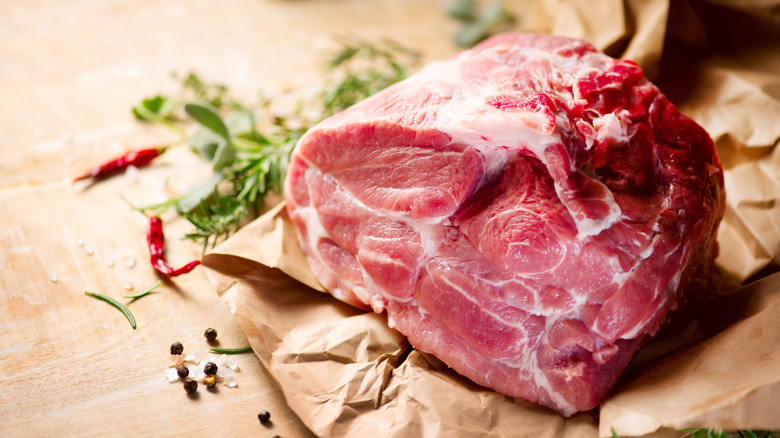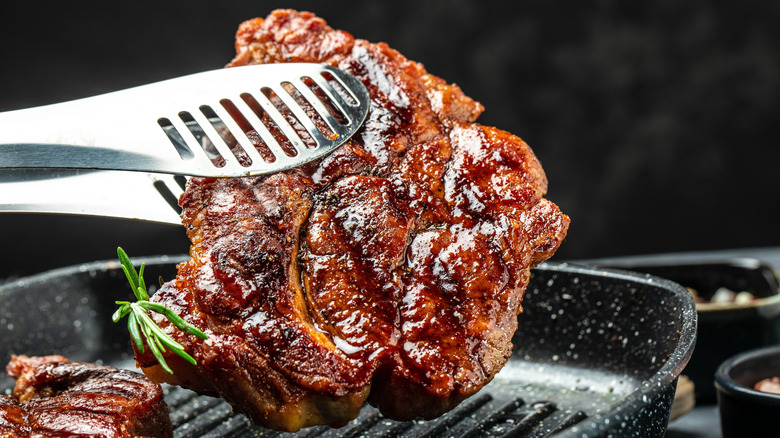Why Pork Steaks Are So Cheap
If you've ever walked through the meat aisle and noticed that a cut labeled "pork steak" is substantially cheaper by the pound than just about anything else around it, you might have been a bit confused. After all, they're larger and more marbled than chops and often include a flavorful bone, making them similar to a beef steak.
There are two main reasons why pork steaks are so cheap. First, it's fast and cheap to raise to pigs to their butcherable maturity. Unless you're trying to buy Jamón Ibérico, the best ham in the world, you're unlikely to ever pay a higher price for pork compared to any other meat. Second, pork steaks are cut from the pig's front shoulder, or Boston butt, which is a tough hunk of meat full of connective tissues and a thick bone. While Boston butt may be popular for long braises and one of the best cuts of pork to smoke, it still remains an exceptionally cheap cut of meat, so steaks sliced from it are comparably inexpensive.
Given that pork steaks can cost half as much per pound as pork chops, which themselves are rarely expensive, they're just about the best budget meat you could ask for. However, keep in mind that anything cut from a Boston butt needs a lot of preparation to become tender, juicy, and flavorful. If you treat a pork steak like a beef steak, you'll end up with a flavorless, tough slab that's almost impossible to enjoy.
How to cook pork steaks
Though tough, pork steaks have one major advantage: Their marbling makes them difficult to dry out. However, since that toughness comes from flavorful collagen, slower, lower temperature cooking methods bring out surprising depths of the flavor from this cut.
While you may smoke a whole Boston butt for upwards of 12 hours, you won't want to spend that long on a pork steak. Two and a half hours at 225 degrees Fahrenheit is plenty of time to bring the meat to a safe internal temperature while melting its collagen and pulling all the flavor from its bone. This is an especially great method if you love your pork steak with barbecue sauce, as you can brush successive layers onto the meat as it cooks to create a rich glaze. That same glaze captures tiny particles from the smoke, ratcheting up its barbecue flavor.
If, instead, you like juicy pork steak with a crispy sear, you can always pan-fry or grill it instead. The key here is to give your steak's collagen enough time to melt without burning the exterior, which can be a tricky balance. If cooking on the stove top, sear your pork steak first and lower the temperature, as necessary, to avoid burning the sides. On the grill, simply cook the steak over indirect heat or just off to the side of the coals to bring it to temperature — 145 degrees Fahrenheit.


